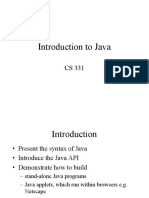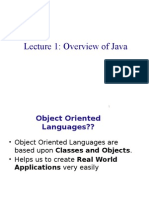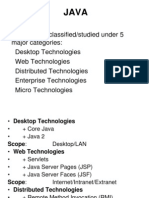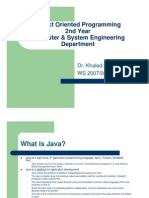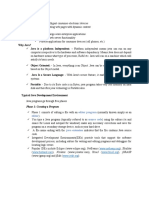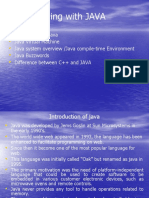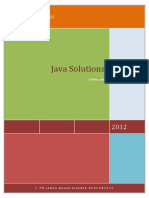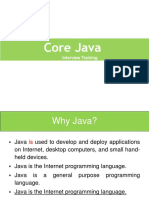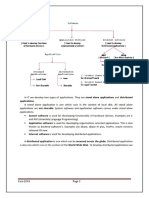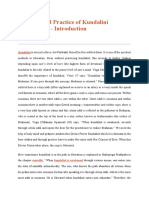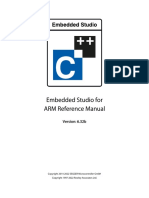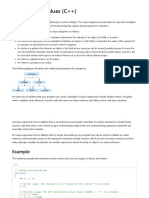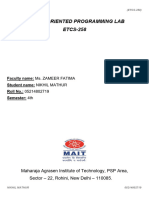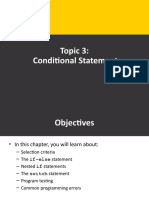0% found this document useful (0 votes)
49 views33 pagesData Structures, Algorithems & Programming in Java: Code:ITM 311
The document discusses key aspects of the Java programming language including:
1) Java code is compiled to bytecode that runs on the Java Virtual Machine (JVM), providing platform independence.
2) Java uses object-oriented programming principles like classes, inheritance, and polymorphism.
3) Core Java features include automatic memory management, security, and multi-threading capabilities.
Uploaded by
dineshgomberCopyright
© © All Rights Reserved
We take content rights seriously. If you suspect this is your content, claim it here.
Available Formats
Download as PPT, PDF, TXT or read online on Scribd
0% found this document useful (0 votes)
49 views33 pagesData Structures, Algorithems & Programming in Java: Code:ITM 311
The document discusses key aspects of the Java programming language including:
1) Java code is compiled to bytecode that runs on the Java Virtual Machine (JVM), providing platform independence.
2) Java uses object-oriented programming principles like classes, inheritance, and polymorphism.
3) Core Java features include automatic memory management, security, and multi-threading capabilities.
Uploaded by
dineshgomberCopyright
© © All Rights Reserved
We take content rights seriously. If you suspect this is your content, claim it here.
Available Formats
Download as PPT, PDF, TXT or read online on Scribd
/ 33


